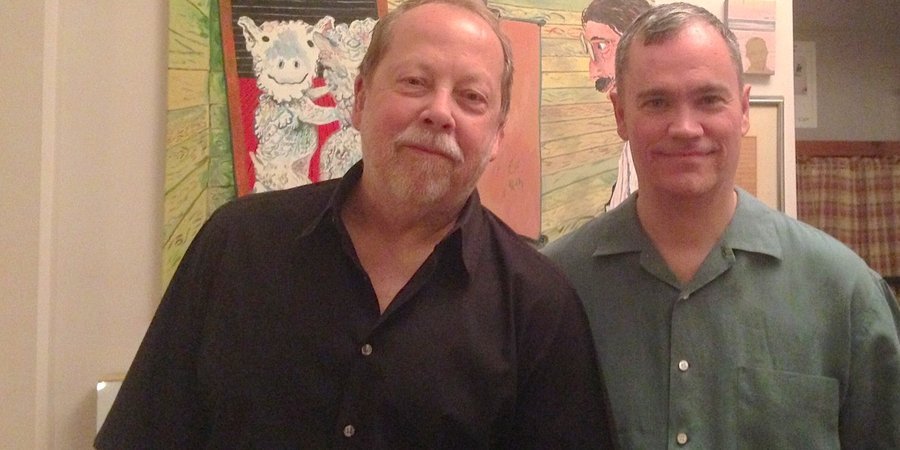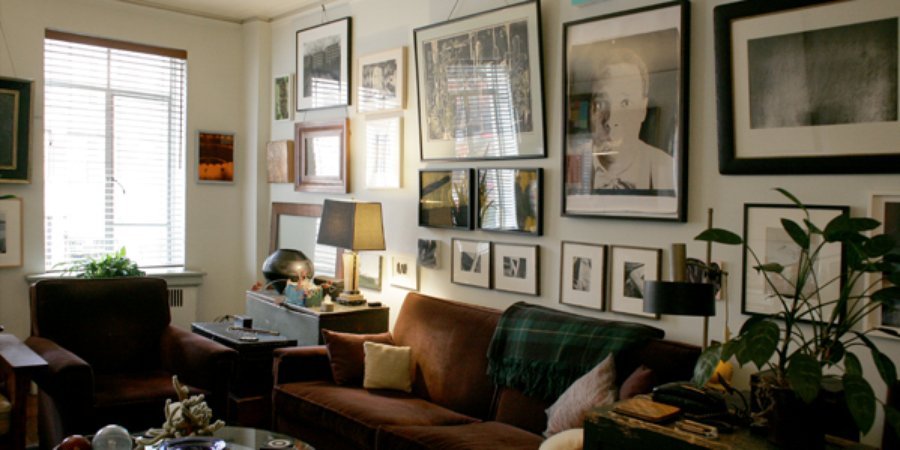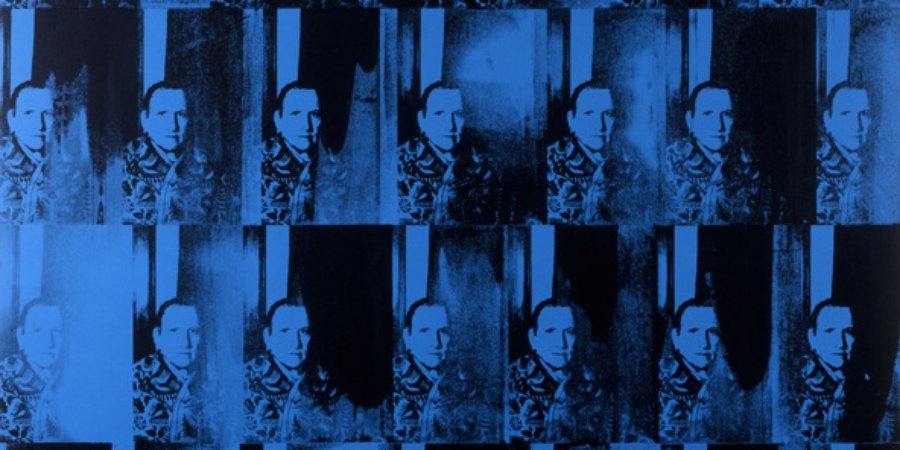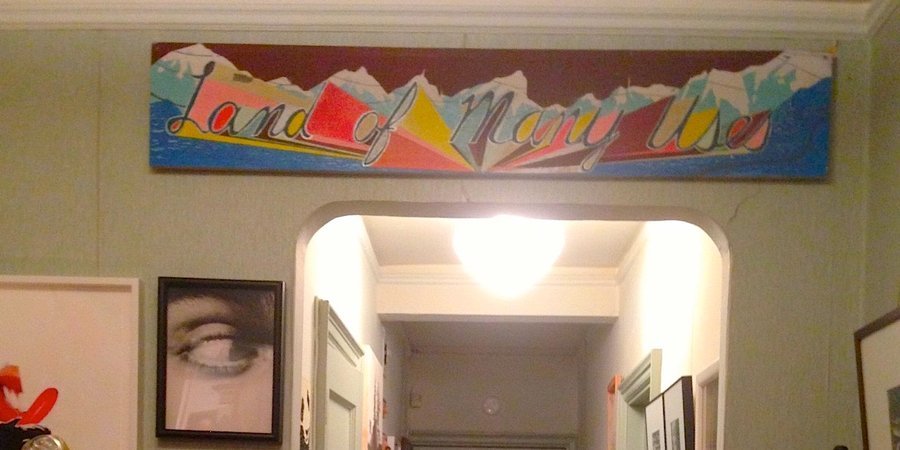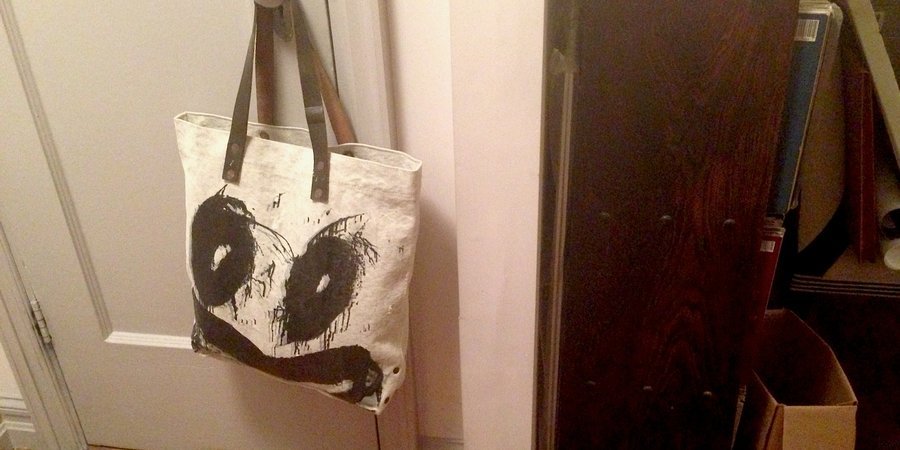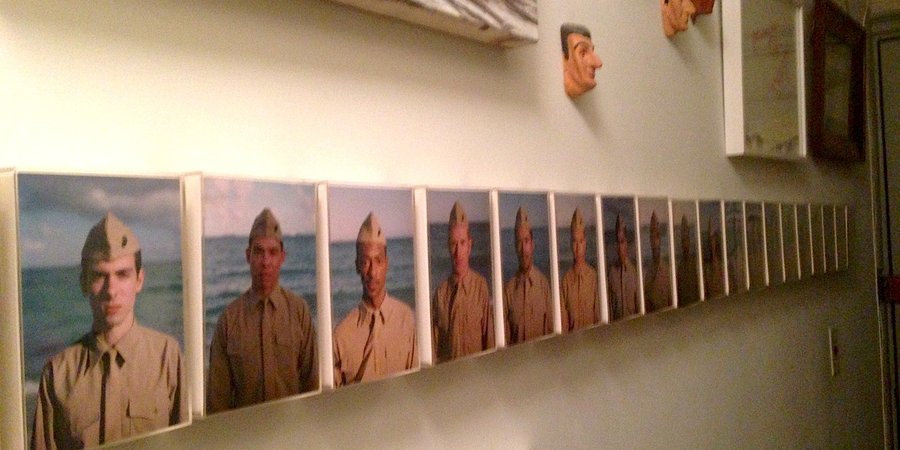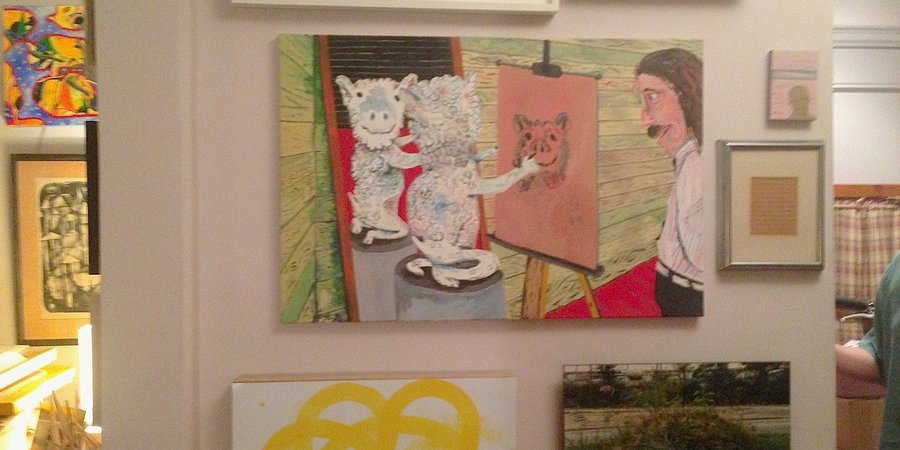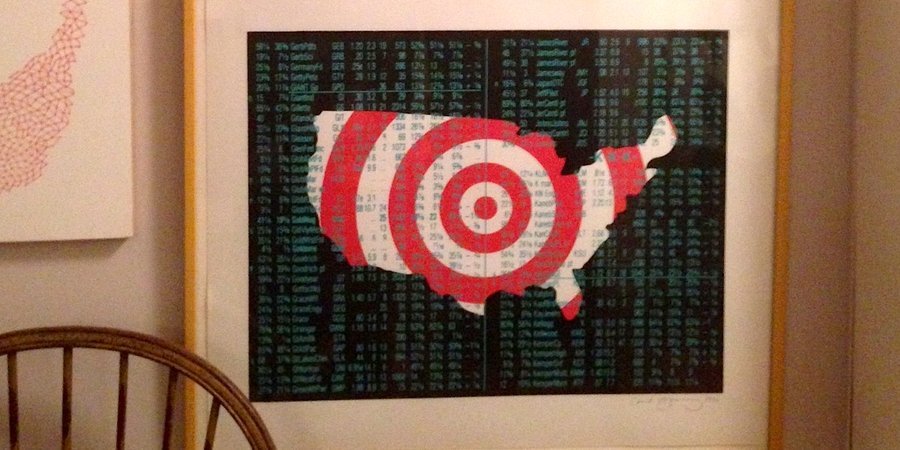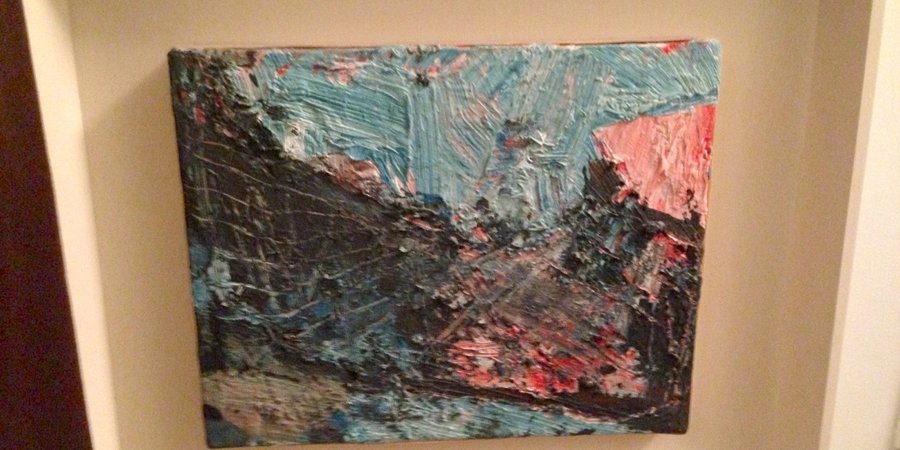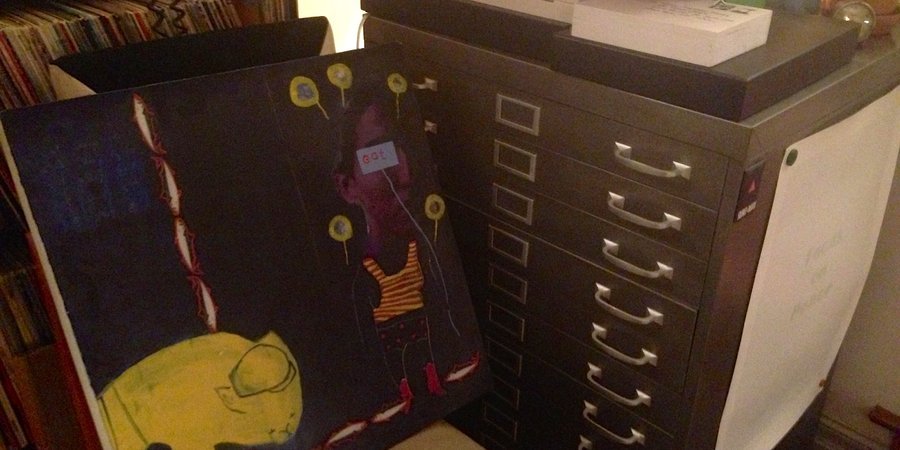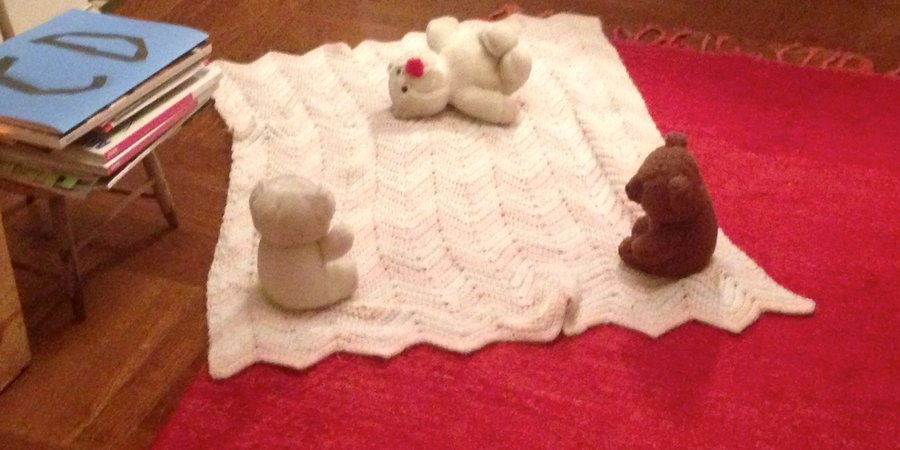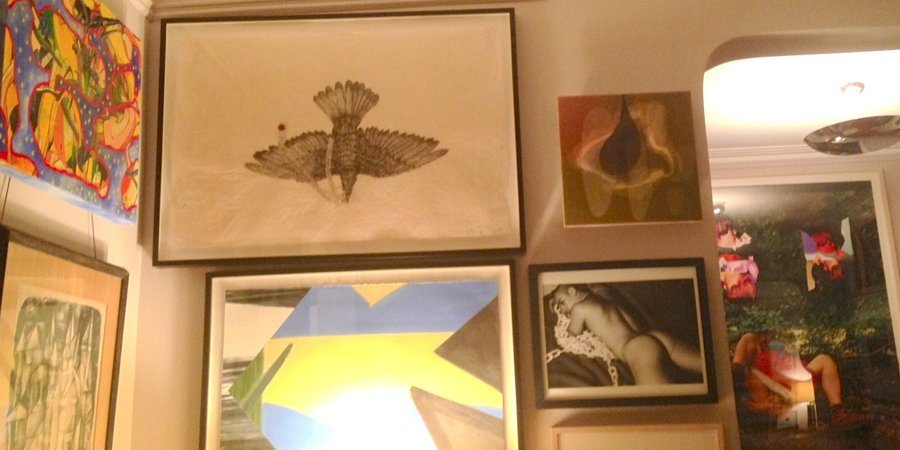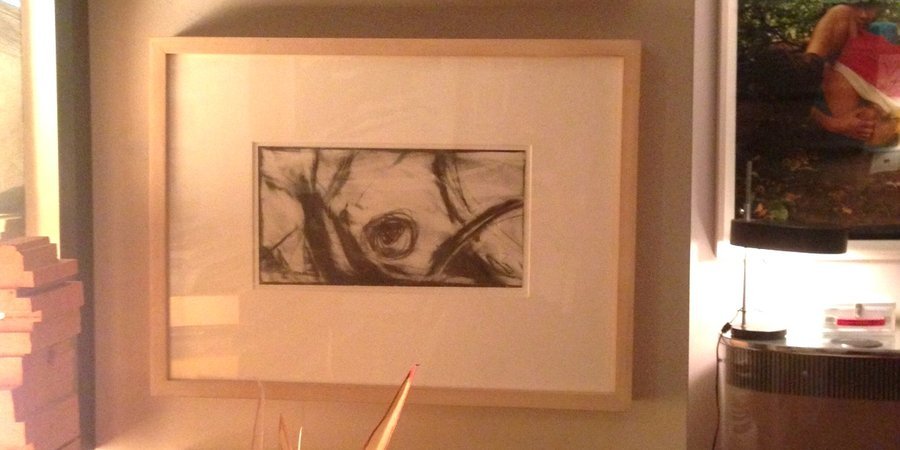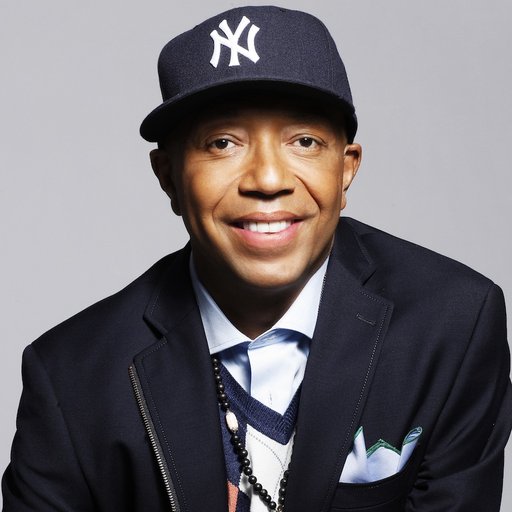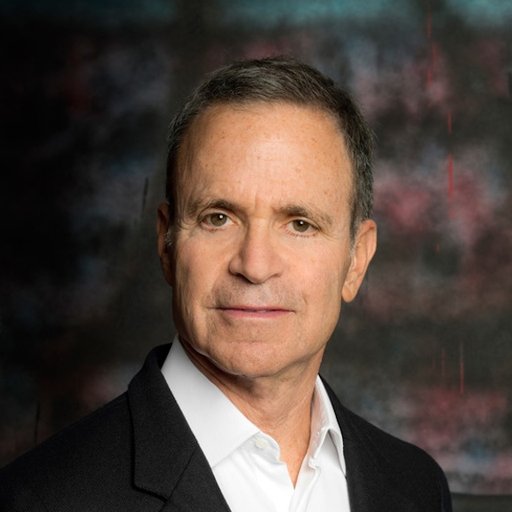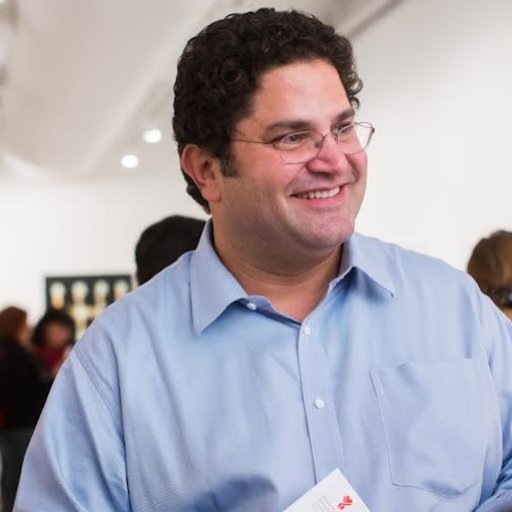Does New York have a new Herb and Dorothy Vogel? It just might, in the persons of James Wagner, a retired insurance underwriter, and Barry Hoggard, a Web developer. In their 21 years together, the couple has filled their two-bedroom Chelsea apartment with 1,000 artworks—almost all of which cost less than $1,000 apiece. Beyond collecting, they have also run the art sites Idiom and the now-shuttered Artcat, and have showed part of their collection at the Brooklyn gallery English Kills.
Wagner and Hoggard spoke with Artspace about how they learned to love art and buy it on a budget.
You've said that you don't have any formal art education or professional experience in the field. How did you begin collecting?
BH: I think it really started for us in the mid-1990s. A lot of it was just a way of supporting emerging artists and galleries. A lot of the work we have is from the very beginning of an artist’s career and back then there wasn’t another way to help except by buying art. Now there’s Twitter and blogs and a lot of other ways to help promote artists.
JW: There are two things you should probably know right from the beginning. One is that we didn’t think of ourselves as collectors for some time and, two, there was never much money involved. We have about 1,000 works, and less than one-percent of them cost more than $1,000. We’ve never sold anything, so it was never intended to work that way either.
How did you make the leap from enjoying art to actually buying it?
JW: I would say the biggest jump in my collecting was two auctions for [HIV/AIDS advocacy group] ACT UP. I didn't have very much money, but I was very interested in helping ACT UP in a financial way, and also being close to art and artists whom I admired. I bought four or five works from two of their live auctions in ’89 and ’90. One is a Robert Yarber photograph—he shows at Sonnabend now—and one is a Josef Albers print from a portfolio.
BH: The other big inspiration was Bill Bartman, the head of Art Resources Transfer Center, which was a publisher and gallery. They published the Chuck Close book about his conversations with his subjects. His benefits were one of the first places we started collecting together. He was a big promoter of the idea that art belonged to everybody and that everyone should be able to afford it. It's thanks to Bill and one of his raffles that we have a Robert Rauschenberg print.
JW: We were also going to small galleries in Williamsburg in the '90s, and we discovered a lot of artists because we followed the curators and galleries. We met [the late art dealer] Daniel Reich when he worked at Pat Hearn and when he was interning at Art Resources Transfer, and we stayed in touch with him. When he first opened a gallery in his studio in Chelsea we started going. We learned about people like Christian Holstad because Daniel was the first person to show him in this 200-square-foot apartment. We also have the first painting Paul P. ever sold because of Daniel.
Have you come around to the label "collector" now?
JW: Yeah, we can't avoid it now. It happened one day when I realized we had two or three archival boxes. I said, "I guess maybe we are collectors now," but it’s not something we ever intended. It was about having something to live with, or we just really liked the art.
BH: Usually when we buy it’s to support certain nonprofits. We’ll buy one or two works at benefits like NurtureArt or Momenta. Those are the main ones we've been involved with. We've been on the benefit committees, we'd do a media sponsorship, and I usually provide some tech help.
Where are your favorite places to discover new art and artists today?
BH: We’re more interested in less well-known art. There are still some galleries in Chelsea we follow closely, mostly the ones on 27th, like Foxy Production, Ed Winkleman, and Postmasters until they moved. I definitely didn’t miss shows at Postmasters, which is going to be on Franklin Street in Tribeca now. Also, P.P.O.W., Mixed Greens, and Murray Guy.
JW: We generally don't go to Williamsburg anymore, except maybe for Pierogi and The Boiler, but we go to Bushwick, where we visit Interstate Projects, Storefront, Theodore:Art. And the Lower East Side has great galleries, mostly on Orchard Street.
BH: Like On Stellar Rays, Participant Inc., Y Gallery, Invisible-Exports, Canada. Klaus von Nichtssagend is one of my all-time favorites.
What about art fairs?
JW: We try to avoid them. Except for the more eccentric or bootstrap operations, like Independent.
BH: I loved Dependent, essentially because we loved the original Gramercy Hotel art fairs, before the Armory. You went to Armory last year, James. I don’t really enjoy the atmosphere or getting to the piers. But it’s a great way to see foreign galleries. There are a number of things we would not have known about otherwise.
JW: It’s the trade-fair environment—you can see great stuff, but it's not the best way to see it. We’ve even been known to buy something at a fair. Twice, I think. The first year Canada gallery was at the Armory we bought a Michael Williams painting.
Some collectors only buy works that adhere to certain aesthetic or thematic criteria. Do you consider the larger whole of your collection when evaluating a potential acquisition?
BH: Not really. One thing that differentiates us from other collectors is that, I don’t know the exact number, but I'd estimate that half of our collection came from benefit auctions. So most of it is about serendipity. We usually buy something in less than an hour of seeing it. There are very few pieces we’ve spent a lot of money on, so it’s easy to react when you like something.
JW: You don’t agonize as much if you’re not worried about whether you can pay the rent next month or not. It's also not about the medium other than it’s much easier to hang something on a wall than to put something in the middle of the floor. It's hard to have sculpture, but we do have some. We even have some video.
BH: Some people have pointed out themes of humor, and that we seem to gravitate toward works that contain elements of humor. There’s a lot of conceptual work, but it has to have an aesthetic, visual component as well.
How do you store everything?
JW: I'm in charge of hanging and it has gotten to the point where we can’t fit anything else. We have roughly 330 works visible in the apartment, and 650 are in drawers or on top of a wardrobe.
BH: We don’t have storage anywhere else, so everything we have is here in the apartment. I think people probably assume we’re wealthier than we are, partly because of the collection and also the apartment. But James got this apartment in 1987, so we’re not really the kind of people who’d have a two-bedroom apartment in Chelsea today.
Do you get a lot of Herb and Dorothy references?
BH: Occasionally. It’s flattering, I love them. I’ve never met them, and Herb’s not around anymore, but I would see them around at openings. They never sold anything either, they donated.
JW: Well, they tried to donate. What the National Gallery didn’t take they donated to one museum in each state, which I think is pretty cool. But then they continued to accumulate more.
BH: The National Gallery gave them a stipend and they continued to buy.
Where would you ultimately like to see your collection go?
BH: I think the collection is really interesting as a story of New York in a certain period of time. Most of the works are from the mid-1990s until the mid-2000s. I can imagine a museum being interested in some of the works we have, but most do not want an entire collection. They want to pick.
JW: The National Gallery didn’t even want all of the Vogel's collection, so I don’t know. It would be less important that our name be attached to the complete collection going somewhere than for it all getting a good home somehow.
And of course it’s still a young collection. We have yet to see where many of these artists will end up.
JW: Yes and some have already become very important. One example is Jules de Balincourt. We bought the painting that is the title of his first show. Actually we bought it before the show, but Jules asked if he could borrow it back. That was LFL Gallery, which became Zach Feuer.
BH: I'm very happy to have it. He was just out of Hunter.
How much did it cost?
JW: Probably less than $1,000.
BH: Yeah, it was $800.
And yourwebsite lists a lot of other names from your collection that are now very recognizable—Walead Beshty, Wolfgang Tillmans, Lyle Ashton Harris, Joyce Pensato. What has it been like to watch the artists you've supported become stars?
BH: We have two Joyce Pensatos, both of which are on loan right now to the Santa Monica Museum of Art. So we went to the show. It was a blast, especially because we just love her. Our Joyces are both from the mid-'90s, when she didn’t even have a gallery. We’re so happy that she’s doing so well now. I’d really like to see a museum show for her in New York. Our two works are going to the St. Louis Contemporary Art Museum next, so we’re not going to see our pieces until sometime early next year.
But, honestly, we’re very happy with everything we have. We don’t have any works where we thought, 'I can't believe I bought that.'











